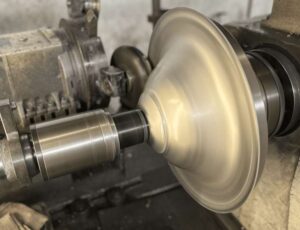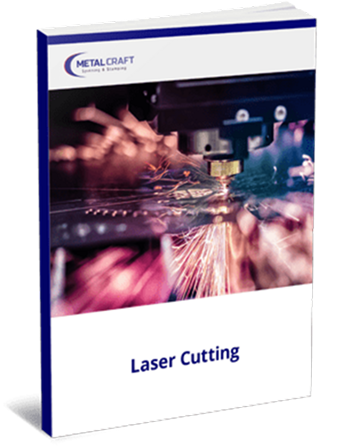Emerging Trends in Metal Spun Products

Quick Summary: Metal spinning is a metalworking process that shapes rotating sheet metal using tooling to create cylindrical, conical, or domed forms. This sustainable manufacturing method produces recyclable components for diverse industries including aerospace, automotive, construction, electronics, and medical, and can complement or serve as an alternative to additive manufacturing processes.
Metal spinning, or turning, has a long history in metalworking processes. It is generally used to create pieces with cylindrical, conical, or domed shapes by rotating a flat piece of sheet metal on a mandrel at high speed. Tooling is used to shape and remove material until the desired form, profile, and thickness are achieved. The process can be done manually or with the aid of CNC machines and robotics.
Metal spinning continues to evolve and expand into new applications, and here we’ll examine its role in some emerging manufacturing trends including sustainability, compatibility with additive manufacturing, and its use in different industries.
Focus on Sustainable Manufacturing
Growing demand for sustainable manufacturing has an impact on the metal spinning industry. Many of the materials that are processed by spinning are recyclable, meeting the demand for environmentally-conscious manufacturing from customers and end-users. Metal spinning also generates low amounts of waste, and those scraps can be recycled.
Spun or turned components can be made from lightweight aluminum and are widely used in the aerospace and automotive industries. These components are durable, corrosion resistant, and contribute to improved fuel efficiency due to their low weight. Other materials, such as brass, copper, steel, and stainless steel are used frequently for roofing, fixtures, HVAC, lighting, and industrial equipment parts. These metals can also be recycled for improved sustainability.
Rise of Additive Manufacturing
Additive manufacturing, or 3D printing, is a popular method of creating intricate or complex metal components with powdered metals. However, it is not always suited to high-volume production or making parts with perfectly smooth edges and surfaces. Metal spinning is a cost-effective and time-efficient process that can be used in combination with 3D printing or as an alternative to it.
Consider these factors when comparing these two methods:
- Design freedom: Additive manufacturing uses a digital design file to create parts by depositing layer upon layer of material, allowing for complex and intricate structures. Spinning can also create components with intricate or complex profiles, smooth surfaces inside and out, and precise thicknesses.
- Reduced waste: Additive manufacturing uses powdered metal materials in the precise amount necessary to print the component or product. Metal spinning is a subtractive manufacturing process, which generates metal scraps. Both types of materials can be reused; however, sheet metal scraps require processing to reuse.
- Customization Spinning: Both processes can be used for small-batch or single-item manufacturing. Metal spinning can also accommodate high-volume production with automated tooling, and by eliminating the cure time common with 3D printed parts.
- Complementary and hybrid approaches: Additive manufacturing is a good choice for prototyping and low-volume production prior to scaling up a project for production by spinning. What’s more, 3D-printed parts can be readily smoothed or polished to a critical finish with metal spinning. It’s also possible to use 3D printing to produce complex, custom, or specialized tooling used in metal spinning operations.
Growing Demand in Diverse Industries
Many industries depend on metal spun products, parts, and components, including:
- Construction: Architectural elements such as decorative pieces, lighting fixtures, and roofing components can be made by spinning sheets of copper, steel, or brass.
- Aerospace: Metal spinning can produce components with a high strength-to-weight ratio, such as aircraft engine components, fuel tanks, and rocket nozzles.
- Automotive: Components such as lighting parts, exhaust systems, and wheel covers for the automotive industry can be created with aluminum and other metal spinning.
- Electronics: Functional electronics components such as heat sinks and enclosures can be produced using metal spinning.
- Medical: Metal spinning is ideal for producing sterile containers, medical equipment parts, and instrument housings with stainless steel and other metals.
We can expect metal spinning to remain a standard method of manufacturing in these and other industries.
Metal Spun Products From Metal Craft
Metal spinning is an environmentally friendly, cost-effective, and efficient manufacturing method. It is a trusted and reliable stand-alone process or it can be used in conjunction with additive manufacturing and other operations to create high-quality products.
Metal Craft provides metalworking services that include metal spinning as well as 5-axis laser cutting; progressive, deep draw, and fourslide stamping; finishing and cleaning services; and engineering support. We work with aluminum, brass, copper, steel, and stainless steel materials and use CNC and other automated equipment for reliable results.
Contact us to request a quote for your next project.


